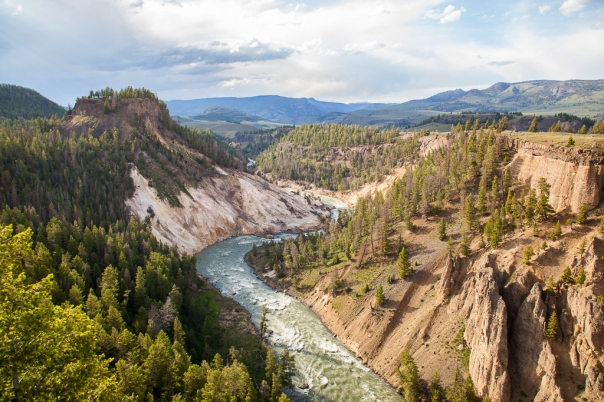
Yellowstone is a very complicated place to enjoy. In some ways it’s a can’t-miss, and in other ways, it’s just not for everyone. You might go there for the bears or bison, but you will be encountering a very different and much more dangerous breed of animal a lot more often: humans, and a damn lot of them.
Thankfully, there are ways to get around the crowds, but it does take some skill and risk. If you do choose to visit, here are a few things you should know.
What to expect
Wildlife is one of the main reasons so many people flock to the park, and you’re almost guaranteed to have some encounters. There is a lot of wildlife, which sounds good. It comes with its responsibilities though–animals might be so used to people they act fearless, but it’s still not a good idea to get in their face.
You’ll surely see bison, moose, elk, deer, and the occasional eagle. Wolves are extremely shy of people and you would have to get very lucky to actually see them, although their howls are not a rare occurrence at night.
As far as dangerous animals go, wolves rarely get close to people and bears are shy as well. Moose are very often underappreciated and underestimated, as are bison. While unprovoked attacks are extremely rare from any animal, bear spray (and the ability to use it) is necessary for hiking the wilder areas of the park. However, the large animals are not the most dangerous. Snakes can be venomous and hard to spot, although staying on trails can solve that problem. Bug spray comes in handy and in some places can save you from hundreds of bites in one hike from mosquitoes, biting flies, ticks, and many other varieties of bloodsuckers.

Weather can be unpredictable. Precipitation is spread surprisingly evenly in the year, so rain is not unusual even in the hottest months. It gets pretty cold too–sub-zeros in the winter and often down to the 40s even in the hottest months. Be prepared for any weather, and make sure an unexpected rainstorm won’t mess with your plans.
You might be surprised to learn that if you intend to stay inside the park at one of the 9 lodges, you’ll have to book at least a year in advance, preferably more. They are always full, and you would have to be very lucky to catch a cancellation. However, there are hotels outside the park that are somewhat less busy, if you don’t mind a few hours’ drive every day.

Speaking of driving, getting around in the park takes longer than you probably plan, due to traffic, narrow roads, viewpoints that are certain to make you stop along the way, and wildlife-induced traffic stops. Also keep in mind that there is very little cell and no internet in the park, so don’t plan to rely on your GPS–download a map instead and make sure to keep track of where you are.
There are a lot of roads in the park, but the two main routes are the Upper Loop, which passes Mammoth Hot Springs, Lower and Upper Falls, and Norris Geyser Basin, and the Lower Loop, which passes Old Faithful, Upper Geyser Basin, Lower Geyser Basin, Gibbon River, Yellowstone River, and West Thumb Basin. The South entrance offers a scenic way of entering the park.

When to visit
Most roads are closed in the winter and open in May, which presents a problem: there’s hardly a manageable offseason. If you are able to, it’s always smart to avoid the most crowded months, regardless of where you are going. For Yellowstone though, that’s close impossible, since 95% of the park is literally closed off in the offseason–and even if that doesn’t bother you, there’s still a lot of snow to manage.
This limits your reasonable options to either May, right as the roads open, or late August and September, as the season is ending. Either way, there’s always the risk that the snow will take longer than usual to melt or start falling earlier than expected, cutting into some or all of your trip. It’s a risk to consider.
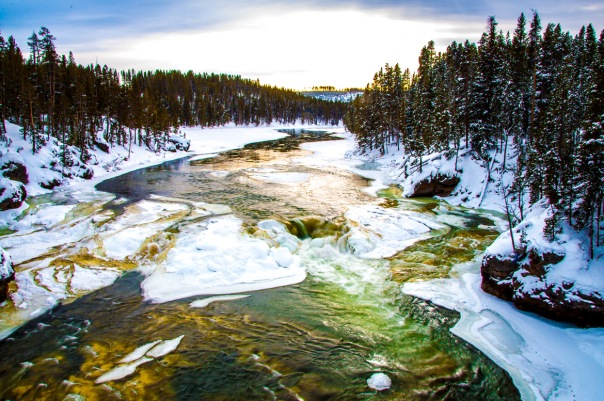
Visiting in the winter is possible, though it can be difficult. Although your options may be limited, there are significantly fewer people during the winter, so your experience may even be better than the other option. It’s a very different experience, and it can be much more enjoyable. However, be ready for road closures, snowstorms, and temperatures well below freezing that may interfere with plans, or even keep you out of the park entirely. It’s risky but possible.
Whatever you do, avoid July and August. The weather and insects can be extreme, and it’s by far the worst in terms of crowds, so much of the park is impossible to enjoy without the other few million people there.
For more extensive tips on when and how to ditch the masses, check out my in-depth article on the topic.

Places to avoid (sometimes…)
There are of course a lot of great places to go, but many of the most obvious ones aren’t on that list. There is one reason for that, and that is the crowds. With over 4 million people visiting the park every year, you will get tired of driving at 2 mph staring at the next car’s stupid vanity plate, only to finally get out and have all the other tourists engulf you in a cloud of sweat-smell, push at you and shove elbows in your ribs to get a better view and stop to pose for selfies every two steps.
Old Faithful:
While it’s certainly famous, consider skipping it. It only erupts every 36-120 mins and the sheer amount of people standing and sitting around block the view. Unless you go at dawn, there is no chance you will be left alone. In the winter though, it’s a lot easier to enjoy.
Grand Prismatic Spring:
It’s one of the most photographed places in the park, and for a good reason. However striking it may be though, the crowds confined to the narrow, boardwalk can ruin the experience in minutes. Once again, winter is an entirely different experience.
Hayden Valley:
This is mostly a drive-through attraction, so the traffic can clog up very easily. Often you will find yourself at an indefinitely long dead halt, as somewhere ahead of you someone spotted wildlife and stopped to stare. However, there really is a lot of wildlife, and since you’ll have some guaranteed elbow room in your car, it’s not a terrible option if you’re okay with incomprehensibly hopeless traffic jams.
Mammoth Hot Springs:
While the hot terraces, springs, mud pots, and other limestone features are certainly interesting, the limited boardwalks and seemingly unlimited amounts of people can very easily ruin the experience. Unless you visit in the winter, when not much else in the park is open, it will be difficult to enjoy, much like Grand Prismatic Spring.
Places to see
Despite the ridiculous crowds in some sections of the park, there are areas that the general masses typically don’t get to, but are just as interesting to see.
West Thumb Geyser Basin:

West Thumb is a relatively small basin compared to others in the park, and it’s generally not a common tourist destination, so it won’t be too crowded. It’s certainly worth seeing though; among its abundant geothermal features are geysers (Lake Shore Geyser, Twin Geysers), hot springs (Blue Funnel Spring, Surging Spring), and geothermal pools (Abyss Pool, Black Pool, Bluebell Pool, Seismograph Pool) with stunning colors, situated conveniently right on the shores of Yellowstone Lake, which is also worth checking out.
Artist Point and Point Sublime:

While it’s often listed as a hike, Artist Point is 0.2 miles from the road with a 16 ft elevation gain, so it’s more of a viewpoint from the highway. Point Sublime is 1.5 miles from the road and offers similar views with fewer people. They are certainly worth a stop, as they offer sweeping views of the Grand Canyon of the Yellowstone River.
Little Gibbon Falls
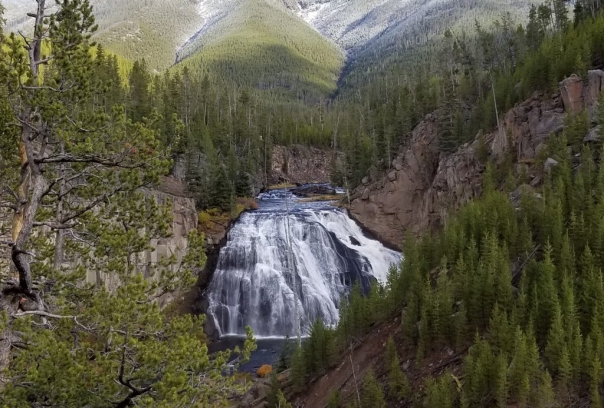
This “hidden” hike gets so little traffic most people don’t even know about it due to it’s discreet location marked only by one sign reading “Wolf Lake” and it’s absence on most road maps–which is exactly why it’s worthwhile. In addition to the falls, Ice Lake is also in the area, and if you hike an extra few miles, Wolf Lake isn’t much of a stretch either.
Two Ocean Plateau:

Two Ocean Plateau received its odd name–given that its hundreds of miles from the nearest ocean–because all the water to the West of it drains into the Pacific, and all the water on the East drains into the Atlantic. While that’s not noticeable when you’re there, the picturesque marsh and views of Yellowstone Lake are the opposite.
Lone Star Geyser:

Given that it’s situated almost 3 miles from the parking lot, there are refreshingly few people at this geyser. The hike is mostly flat and partially paved, following the Firehole River. The geyser erupts only every three hours, but there are plenty of other unnamed geysers and hot springs in the area to explore while waiting. There’s a log book at the parking lot where hikers write down the time of the previous eruption so you’ll know roughly what to expect.
A note on human stupidity
In broad daylight in peak season, Yellowstone is extremely crowded. If you’re lucky, you may be able to get around the crowds, but the park’s permanent residents have little choice. Both animals and tourists are sometimes so unafraid of each other that people will get out of their cars and approach animals as if neither poses a threat to the other. If the animal doesn’t like that, it’s not the tourists who get shot by the rangers, sadly.
It’s not just on the roads where stupid people can cause damage; things like getting off the trail or boardwalk in areas where there are signs explicitly saying not to can permanently damage the environments–or the people, in the case of the guy who boiled to death in a hot spring a few years ago after leaving the boardwalk.
Tourists who think they’re in a zoo or amusement park do stupid and selfish things. It happens all the time and there is little to do about it, but that doesn’t make it any better. If you want to avoid it, stay away at tourist season. If you want to change it, sue away. But whatever you do don’t be one of them.
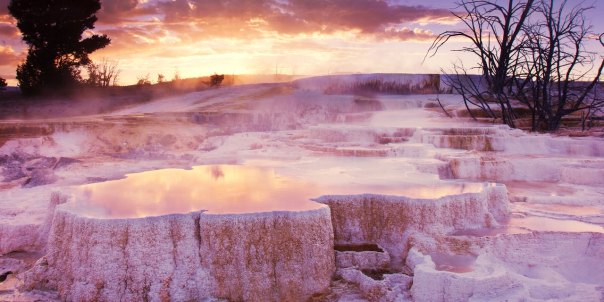


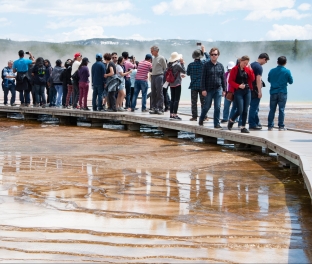





Hey, I’m flattered that you liked my image well enough to use it for your post (the one you’re using for your header image at the top). That is a highly sought-after image and I do charge licensing fees for both print and web use. If you would like to continue to use it, I would be happy to discuss my usage fees.
Great post, by the way, I love Yellowstone.
LikeLike
Hey, thanks for letting me know. I’m currently on a tight budget for this site, as it’s just a hobby and I get no income from it. I don’t always check if the pictures are free to use, so sorry about that. I’ll take out/replace the image as soon as I can. Sorry about the inconvenience and thanks for contacting me.
LikeLike